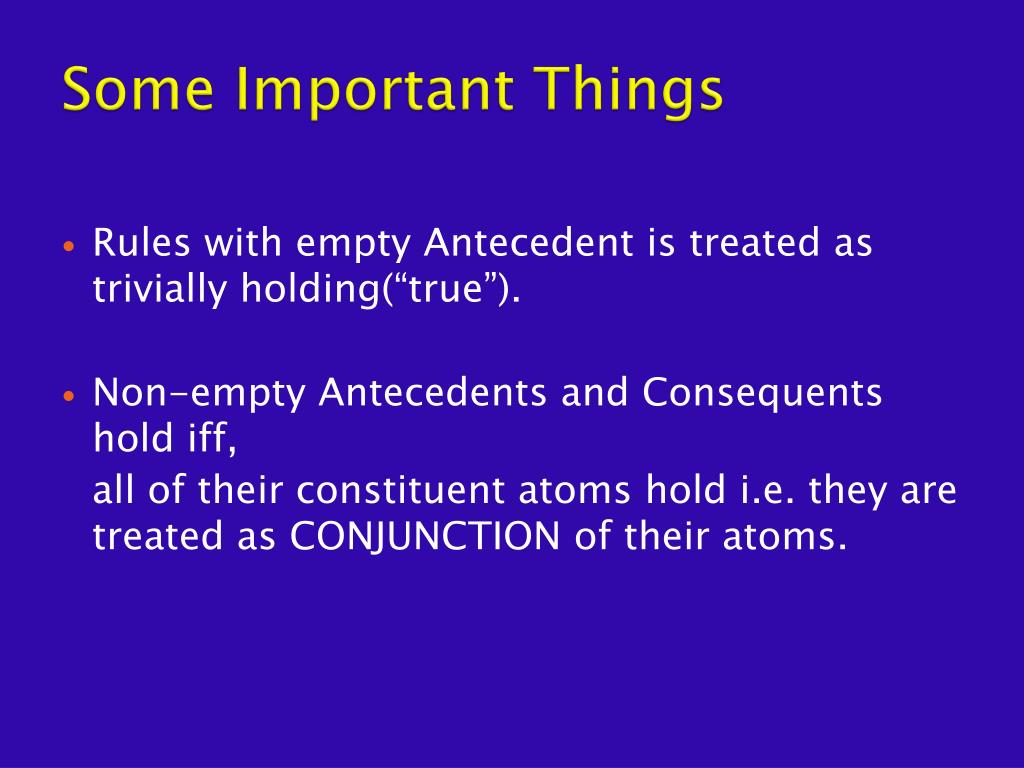

- WHAT DOES SEMANTIC RULES EXAMPLES HOW TO
- WHAT DOES SEMANTIC RULES EXAMPLES MANUAL
- WHAT DOES SEMANTIC RULES EXAMPLES PATCH
Support any package managers and languages via plugins.
WHAT DOES SEMANTIC RULES EXAMPLES MANUAL
Avoid potential errors associated with manual releases. Integrate with your continuous integration workflow. Publish on different distribution channels (such as npm dist-tags) based on git merges. Use formalized commit message convention to document changes in the codebase. Notify maintainers and users of new releases. New features and fixes are immediately available to users. Enforce Semantic Versioning specification. Trust us, this will change your workflow for the better. This removes the immediate connection between human emotions and version numbers, strictly following the Semantic Versioning specification and communicating the impact of changes to consumers. Semantic-release automates the whole package release workflow including: determining the next version number, generating the release notes, and publishing the package. Note that names cannot contain leading zeros, but hyphens are allowed in names for pre-release identifiers.📦 🚀 semantic-release Fully automated version management and package publishing Then if another build is needed, it would become 1.0.0-alpha.2, and so on. Thus a pre-release for version 1.0.0 could be 1.0.0-alpha.1. Pre-release metadata is identified by appending a hyphen to the end of the SemVer sequence. 
Valid identifiers are in the set and cannot be empty.
WHAT DOES SEMANTIC RULES EXAMPLES PATCH
If the current version is 2.6.9 then the next version for a patch upgrade will be 2.6.10.

There are no functionality changes in the patch version upgrades.
Z stands for a Patch Versions: Versions for patches are used for bug fixes. Increase the value of Y when implementing new features in a backward-compatible way. If the current version is 2.6.9 then the next upgrade for a minor version will be 2.7.0. When you increase the minor version, you increase it by one but you must reset the patch version to zero. It is used for the release of new functionality in the system. Increase the value of X when breaking the existing API. If the current version is 2.6.9 then the next upgrade for a major version will be 3.0.0. When you increase the major version number, you increase it by one but you reset both patch version and minor versions to zero. The leftmost number denotes a major version. Semantic Versioning is a 3-component number in the format of X.Y.Z, where : Check if a value is present in an Array in Javaĭifferent components of version numbering. Reading and Writing JSON to a File in Python.  Iterate over characters of a string in Python.
Iterate over characters of a string in Python. WHAT DOES SEMANTIC RULES EXAMPLES HOW TO
How to select multiple columns in a pandas dataframe. Ways to read input from console in Java. Implement a stack using singly linked list. How to rename columns in Pandas DataFrame. Different ways to iterate over rows in Pandas Dataframe. Selecting rows in pandas DataFrame based on conditions. How to drop one or multiple columns in Pandas Dataframe. Reading and Writing to text files in Python. Adding new column to existing DataFrame in Pandas. ISRO CS Syllabus for Scientist/Engineer Exam. ISRO CS Original Papers and Official Keys. GATE CS Original Papers and Official Keys.








 0 kommentar(er)
0 kommentar(er)
